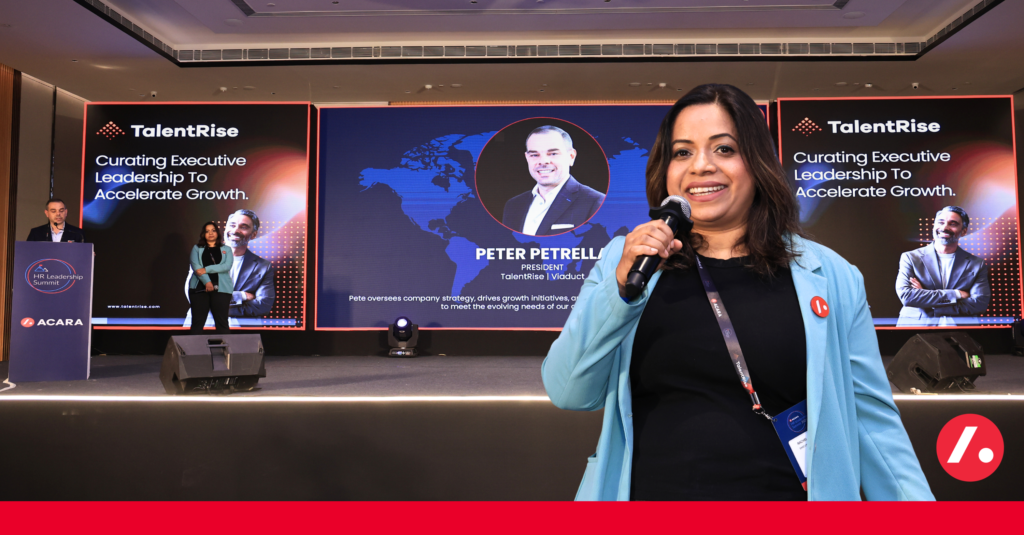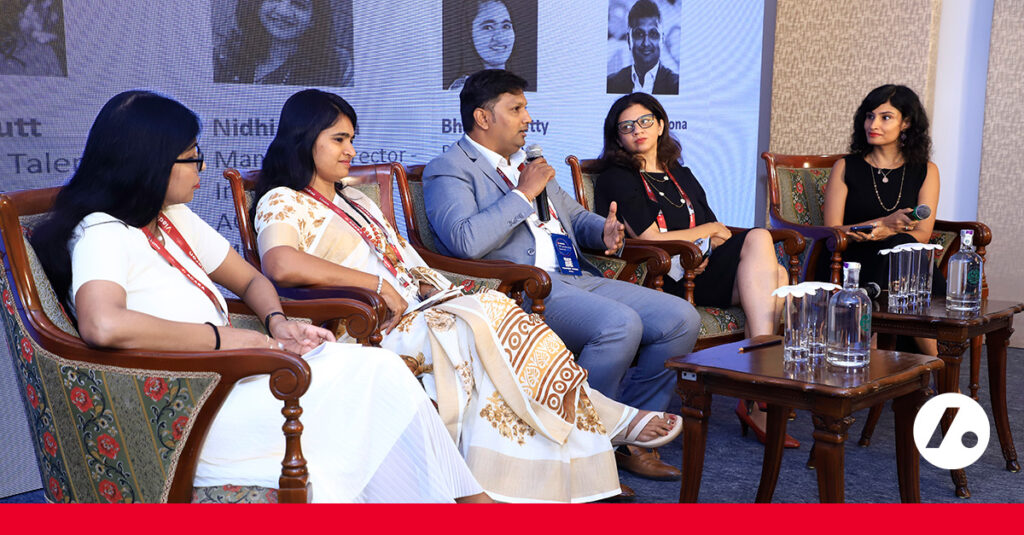
The GCC Revolution: When India Stopped Being Just a “Cost Center” and Started Leading Global Innovation
India’s GCC (Global Capability Centers) have become pivotal in the global business ecosystem—but are they truly fostering innovation, or simply serving as offshore extensions?
Real stories from HR leaders who’ve lived through the transformation
Picture this: It’s 2005. You’re in a boardroom where executives are calculating how many Indian engineers they can hire for the cost of one American developer. Fast forward to 2025, and those same “cost centers” are now building AI tools used by millions, creating multi-million-dollar business lines, and making strategic decisions that shape global companies.
This isn’t just corporate evolution—it’s a complete mindset revolution. At our HR Summit 2025, we got the inside story from four leaders who’ve lived through this incredible transformation.
The Lightbulb Moment: When Everything Changed
Mohith Mohan, who’s been building GCCs since the early 2000s, put it perfectly: “I was talking to a COO recently who said, ‘I’m not here to build a Navy, but I’m here to build a team of Navy SEALs.’ That’s when you know the conversation has completely changed.”
We’ve gone from “How many people can we hire?” to “How exceptional can our team be?”
Leetha Prajesh from Amadeus shared a story that gave me chills: “We started with 400 people as an ‘experiment’ outside of Europe. Twelve years later, we’re the largest Amadeus center globally, operating in 190 countries. That doesn’t happen by accident—it happens when you prove you can lead, not just follow.”
When Six Engineers Built a Million-Dollar Business
Here’s a story that perfectly captures this shift. During the pandemic, Lowe’s website was getting 20 million daily visitors. While everyone else was probably panicking about server capacity, six engineers in India looked at those numbers and thought, “What if we could turn this traffic into revenue?”
They built a media monetization platform. From scratch. Without being asked.
Today? It’s a multi-million-dollar business.
Swati Agrawal from Lowe’s India told us: “This wasn’t about following orders from headquarters. This was about seeing an opportunity and having the confidence—and the freedom—to act on it.”
That’s the difference between old GCCs and new ones. The old ones waited for instructions. The new ones create opportunities.
The “Shy Indian” Problem (And How We’re Solving It)
Leetha shared something that resonated with everyone: “We in Asia are not very good at talking about the work we do. I don’t know why we are so shy about it. I personally, even though I’m very shy about it.”
But here’s the thing—that shyness is costing us. When your team builds something amazing, and you don’t tell anyone, how will the world know what you’re capable of?
Sruti Mishra from ZEISS India added, “We need to showcase our talent. Every small product move that we think is small might be big business value.”
How many incredible innovations are happening in Indian offices right now that the world doesn’t know about simply because we’re too modest to share them?
The Real Secret: It’s Not About the Technology
Everyone talks about AI and digital transformation, but our panelists revealed the real secret sauce: culture.
Leetha dropped this truth bomb: “Innovation should be a culture. It should not be a goal. It should not be a KPI that we sign up for on our goal sheet. As GCCs, it should be an inherent part of our DNA to keep innovating.”
But what does that look like?
Real ownership, not fake ownership. As Leetha put it: “You need to move away from pseudo-ownership to real value ownership. Can the entire decision-making for a product be based out of the team working in India? That’s when true innovation happens—when you’re not constantly going back to seek approvals.”
Permission to fail. “We need to accept failures, be open to more business challenges, and expose teams to learn from mistakes,” Leetha explained. “Building that entrepreneurship mindset is crucial.”
The Gen Z Reality Check
Let’s talk about attracting and keeping young talent when they have infinite options.
Sruti nailed it: “Gen Z and millennials think beyond paychecks. They want to be associated with organizations that have a purpose at heart.”
Here is what is working:
Make them part of the story before they join. Sruti explained: “Make them part of your journey before they are part of your journey. Showcase your stories, your wins, and show them how they can contribute to something bigger.”
Throw out the training manual. Mohith was refreshingly honest: “Gone are the days of mandatory 40-hour training programs. Today, attention spans are measured in seconds, not minutes. We need to personalize everything.”
The AI Revolution is Already Here
Want to know what the future looks like? Swati shared a recent example that blew my mind:
“Our team in India collaborated with OpenAI to develop AI tools for both customers and store associates. The customer tool is embedded on our website—customers can ask open-ended questions, and the AI is smart enough to not just say ‘sorry, we don’t have this paint color’ but suggest alternatives and tell you where to buy them.”
This isn’t some future roadmap—this is happening right now, built by teams in India, impacting millions of customers globally.
The Amadeus “Anokhi” Story: When Companies Take Responsibility
Leetha shared a story that shows how forward-thinking GCCs are giving back:
“We hire about 1,000 people annually, and we noticed that women from certain universities weren’t joining the workforce. After investigating, we created ‘Anokhi by Amadeus’—a program working with 7-8 universities to inspire women to join the workforce, even if not at Amadeus.”
“We have 80 students going through an inspiration program, working on live projects with us. Even if they don’t join Amadeus, we’re creating economic opportunities for women from rural backgrounds.”
This is what real corporate responsibility looks like—not just hiring the best talent but creating the conditions for more talent to emerge.
The Numbers Don’t Lie
Let’s get real about the impact:
1,800 GCCs currently operating in India
1.9 million professionals employed directly
2x growth projected in the next 5-6 years
2% of India’s GDP today, projected to reach 5%
Nearly 4 million indirect jobs in supporting industries
As Mohith pointed out, “This is a great story about Make in India. We’re not just getting jobs done—we’re building products, creating intellectual property, and driving innovation.”
What This Means for HR Leaders (The Real Talk)
Our panelists didn’t sugarcoat their advice:
Stop accepting the offshore label. As Leetha said, “Question the empowerment decision-making. Don’t succumb to being the regular offshore center.”
Build innovation into your DNA. Sruti shared that ZEISS invests 15% of revenue into R&D annually. “If you’re claiming GCCs are innovation centers, you need to build that culture.”
Look beyond the obvious talent pools. Whether it’s women returning to work, talent in tier-2 cities, or unconventional backgrounds, the best companies are finding talent where others aren’t looking.
Design for the future, not the present. Mohith’s advice: “Hire talent for tomorrow, build the workforce of the future, don’t hire for today.”
The Mindset Shift That Changes Everything
The most powerful moment came when Leetha said: “To drive innovation, you need to move away from pseudo-ownership to real value ownership. Why should it only be a cost advantage? Can the entire decision-making for a product be based out of the team working in India?”
That’s the question every GCC leader needs to ask themselves. Are we still waiting for permission to lead, or are we ready to take ownership of outcomes?
Where Do We Go from Here?
The transformation is real, but it’s not complete. We’re at an inflection point where the most ambitious GCCs are becoming global innovation centers, while others are still stuck in the old cost-center mindset.
The difference? It’s not about the technology they use or the size of their teams. It’s about the audacity to believe that the best ideas can come from anywhere—and the systems to turn those ideas into reality.
As I left the summit, I kept thinking about that COO who wanted to build “Navy SEALs, not a Navy.” That’s not just a cute analogy—it’s a completely different way of thinking about talent, capability, and potential.
The question isn’t whether GCCs in India are innovation centers. The question is: Which ones are brave enough to act like it?
This blog captures the insights from Archana Rajamanickam, Mohith Mohan, Swati Agrawal, Sruti Mishra, and Leetha Prajesh during our HR Summit 2025 panel discussion. Their stories remind us that behind every transformation statistic is a human story of ambition, challenge, and breakthrough.
What’s your GCC story? Are you building a Navy, or are you building Navy SEALs?
Watch the highlight video to relive the key moments: Watch Now




